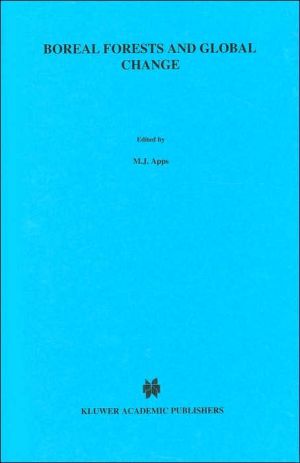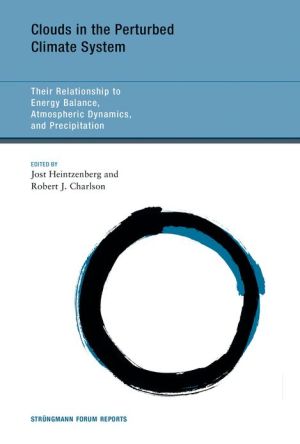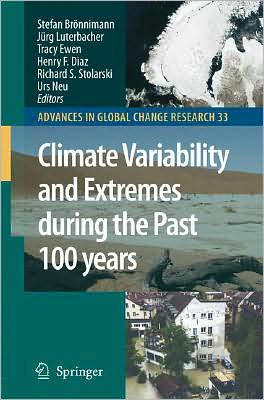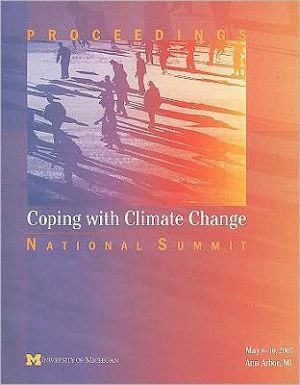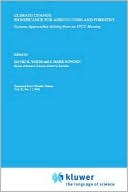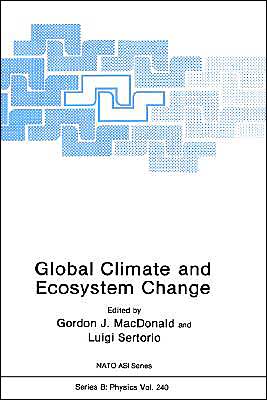Boreal Forests and Global Change (Water, Air and Soil Pollution Series/Volume 82 Nos. 1/2 May 1995): Peerbs-reviewed Manuscripts Selected from the International Boreal Forest Research Association Conference, Held in Saskatoon, Saskatchewan, Canada
Boreal forests form Earth's largest terrestrial biome. They are rich in ecosystem and landscape diversity, though characterized by relatively few plant species, as compared to other forested regions. The long term viability and sustainability of boreal forests is influenced by many factors. They are subject to interruptions at intervals by large-scale natural disturbances, and increasingly by human activities. Boreal ecosystem development is typically a slow process; hence rapid changes in...
Search in google:
Boreal forests form Earth's largest terrestrial biome. They are rich in ecosystem and landscape diversity, though characterized by relatively few plant species, as compared to other forested regions. The long term viability and sustainability of boreal forests is influenced by many factors. They are subject to interruptions at intervals by large-scale natural disturbances, and increasingly by human activities. Boreal ecosystem development is typically a slow process; hence rapid changes in the global environment may invoke complex responses. Many industrial nations border, or lie within, boreal regions, deriving much of their economic wealth and culture from the forests. The response of boreal forests to changes in the global environment - whether caused by direct human activity or by indirect changes such as the anticipated changes in climate - are therefore of considerable international interest, both for their policy implications and their scientific challenges. This book which contains almost 50 peer-reviewed papers from a world-wide group of experts assembled under the auspices of IBFRA, the International Boreal Forest Research Association, covers topics which will stimulate further research and the development of constructive policies for improved management and conservation of global boreal forest resources. Booknews The objective of the September 1994 conference was to bring together scientists, engineers, economists, and policy makers to examine the long-term sustainability of global boreal forests, by considering the interactions among forest management practices, ecosystem carbon cycling, and global change. Some 50 peer-reviewed papers provide scientific, economic, and policy perspectives on global boreal forests at local, regional, and global scales. The papers are grouped into four sections: forest management (including biodiversity and socioeconomic issues), carbon cycling, climate change, and advanced technologies. Reprinted from Water, Air and Soil Pollution, V.82, nos.1-2, 1995. Annotation c. Book News, Inc., Portland, OR (booknews.com)
ForewordPrefaceAcknowledgmentsWest-East cooperation in Europe for sustainable boreal forests3Problems of forest management in Russia13Conserving the boreal forest by shifting the emphasis of management action from vegetation to the atmosphere25Forest operations and environmental protection35Application of a bioeconomic strategic planning model to an industrial forest in Saskatchewan43Emergence of a biodiversity concept in Swedish forest policy57Criteria and indicators of sustainable forest management in Canada67Forestry and the boreal forest: maintaining inherent landscape patterns71Forest health monitoring in Canada: how healthy is the boreal forest?77Bioproductivity of spruce stands in northern European Russia87Long-term experiments in selectively cut Norway spruce (Picea abies) forest97Reforestation trials in the Khabarovsk Territory, Russia107Artificial regeneration of spruce on cold, wet soil: 10 years along115Structure and biomass of larch stands regenerating naturally after clear-cut logging125Desiccation of white spruce seedlings planted in the southern boreal forest of British Columbia133Jack pine (Pinus banksiana) seedling emergence is affected by organic horizon removal, ashes, soil, water and shade147Modelling forest regeneration processes in clear-cut and burned areas in Angara Region155Using fuel characteristics to estimate plant ignitability for fire hazard reduction161Simulation of mixedwood management of aspen and white spruce in northeastern British Columbia171Application of science to environmental impact assessment in boreal forest management: the Saskatchewan example179Nitrogen mineralization in boreal forest stands of Isle Royale, northern Michigan191The Boreal Forest Transect Case Study: global change effects on ecosystem processes and carbon dynamics in boreal Canada203Litter quality and its potential effect on decay rates of materials from Canadian forests215Dynamics of the dead wood carbon pool in northwestern Russian boreal forests227Carbon pools and fluxes of 25-year old coniferous and deciduous stands in middle Siberia239Carbon stock and deposition in phytomass of the Russian forests247A survey of the forest site characteristics in a transect through the central Canadian boreal forest257Carbon in vegetation of Russian forests: methods to estimate storage and geographical distribution271Simulating carbon dynamics of the boreal forest in Pukaskwa National Park283Simulating carbon storage in forests of eastern Russia299Simulation of forest and wood product carbon budget under a changing climate in Finland309An analysis of future carbon budgets of Canadian boreal forests321A system for evaluation of growth and mortality in Russian forests333Boreal forest catchments: research sites for global change at high latitudes351The Nashwaak Experimental Watershed Project: analysing effects of clearcutting on soil temperature, soil moisture, snowpack, snowmelt and stream flow363Temporal and spatial variations of terrestrial biomes and carbon storage since 13,000 yr BP in Europe: reconstruction from pollen data and statistical models375The aspen parkland in western Canada: a dry-climate analogue for the future boreal forest?391Potential effects of climatic change on some western Canadian forests, based on phenological enhancements to a patch model of forest succession401Boreal forest futures: modelling the controls on tree species range limits and transient responses to climate change415Disturbance impacts on forest temporal dynamics429Predicting the effects of climate change on fire frequency in the southeastern Canadian boreal forest437Effects of climate change on insect defoliator population processes in Canada's boreal forest: some plausible scenarios445Global carbon dynamics of higher latitude forests during an anticipated climate change: ecophysiological versus biome-migration view455Pattern and change of a boreal forest landscape in northeastern China465Description of the Canadian Regional Climate Model477Aspen bark photosynthesis and its significance to remote sensing and carbon budget estimates in the boreal ecosystem483Using aerial photography and satellite imagery to monitor forest cover in western Siberia499Monitoring primary production from Earth observing satellites509Epilogue: First Nations perspective on the boreal forest525List of Conference Participants529List of Reviewers541Author Index543Subject Index545
